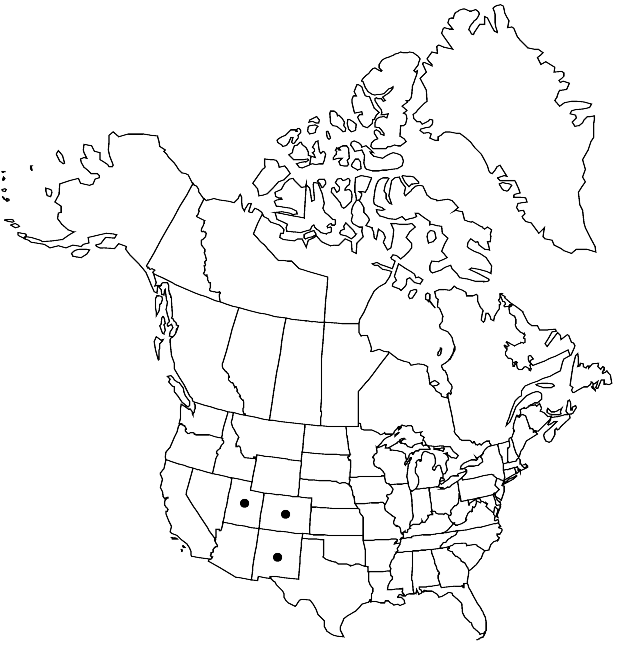Difference between revisions of "Boechera consanguinea"
Harvard Pap. Bot. 11: 261. 2007.
FNA>Volume Importer |
imported>Volume Importer |
||
| (One intermediate revision by the same user not shown) | |||
| Line 56: | Line 56: | ||
|publication year=2007 | |publication year=2007 | ||
|special status= | |special status= | ||
| − | |source xml=https:// | + | |source xml=https://bitbucket.org/aafc-mbb/fna-data-curation/src/2e0870ddd59836b60bcf96646a41e87ea5a5943a/coarse_grained_fna_xml/V7/V7_506.xml |
|tribe=Brassicaceae tribe Boechereae | |tribe=Brassicaceae tribe Boechereae | ||
|genus=Boechera | |genus=Boechera | ||
Latest revision as of 22:34, 5 November 2020
Biennials or perennials; short-lived; apomictic; caudex present or absent. Stems usually 1 per caudex branch, arising from center of rosette near ground surface, 1.5–5 dm, densely pubescent proximally, trichomes short-stalked, 2–6-rayed, 0.2–0.5 mm, glabrous or sparsely pubescent distally. Basal leaves: blade oblanceolate, 2–10 mm wide, margins usually dentate, sometimes ciliate near petiole base, trichomes (usually spurred), to 0.7 mm, surfaces moderately to densely pubescent, trichomes short-stalked, 4–8-rayed, 0.1–0.4 mm. Cauline leaves: 15–36, sometimes concealing stem proximally; blade auricles 1–3 mm, surfaces of distalmost leaves sparsely pubescent. Racemes 20–55-flowered, usually unbranched. Fruiting pedicels reflexed to divaricate-descending, usually curved downward, 8–14 mm, usually pubescent, rarely glabrous, trichomes subappressed, branched. Flowers divaricate-descending at anthesis; sepals pubescent; petals pale lavender, 5–8.5 × 1–2 mm, glabrous; pollen spheroid. Fruits reflexed to pendent, rarely appressed to rachis, not secund, straight or slightly curved, edges parallel, 4–6 cm × 1–2 mm; valves glabrous; ovules 100–128 per ovary; style 0.05–0.5 mm. Seeds biseriate to sub-biseriate, mature seeds not seen.
Phenology: Flowering May.
Habitat: Rocky slopes and sandy soil in ponderosa pine, pinyon-juniper, and sagebrush communities
Elevation: 1900-2500 m
Distribution

Colo., N.Mex., Utah.
Discussion
Morphological evidence suggests that Boechera consanguinea is an apomictic species that arose through hybridization between B. fendleri and B. retrofracta. It is most similar to B. goodrichii, another apomictic hybrid involving B. retrofracta (see M. D. Windham and I. A. Al-Shehbaz 2007 for detailed comparison).
Selected References
None.